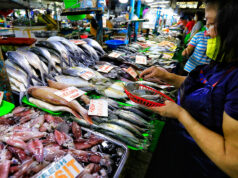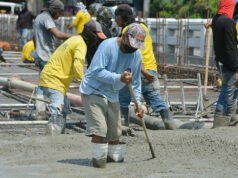Cash sent home by OFWs recovers
By Melissa Luz T. Lopez
Senior Reporter
CASH remittances recovered in July, the central bank reported on Monday, as overseas Filipino workers (OFWs) likely took advantage of a weakening peso.
Money sent home by migrant workers reached $2.401 billion that month, growing 5.2% from the $2.283 billion received in July 2017 and turning around from a 4.5% decline posted in June, according to data released by the Bangko Sentral ng Pilipinas (BSP).
In a statement, the central bank attributed the rebound to a 4.5% increase in amounts sent by land-based OFWs which hit $1.9 billion. OFWs working at sea also sent bigger amounts totalling $511 million, up by 7.8% year-on-year.
By source, remittances mostly came from the United States, Canada, the United Kingdom and Germany.
Around 10 million OFWs provide for their families living in the Philippines.
In turn, these cash transfers fuel household consumption that contributes nearly 70% to gross domestic product (GDP).
HSBC Global Research as well as the Union Bank of the Philippines (UnionBank) had expected July remittances to have grown by 5.1%.
With July’s inflows, year-to-date cash wired home by OFWs through banks reached $16.58 billion, three percent more than the $16.095 billion sent in 2017’s comparable seven months.
Sought for comment, UnionBank of the Philippines, Inc. chief economist Ruben Carlo O. Asuncion said remittance flows grew as more Filipinos took advantage of a weaker peso-dollar rate.
“I really think the depreciating peso is the major driver of July remittances’ recovery. Our overseas workers are really encouraged to send money back home right away if they think their families will get more,” Mr. Asuncion said in an e-mail.
The local unit traded weaker than P53 against the greenback that month to average P53.4329, compared to the P50.6382 rate in July 2017.
In turn, July’s recovery in cash inflows should spur household spending this quarter, offsetting any GDP damper from damage by super typhoon Mangkhut which destroyed 250,730 metric tons of paddy rice as of latest count. While farm output has historically contributed less than 10% to GDP, rice has been a key contributor to multi-year-high inflation that averaged 4.8% in the seven months to August against the BSP’s 2-4% target band for 2018.
“Q3 consumption will definitely be higher with this July recovery, and with higher domestic demand, this would mean better overall growth prospects,” Mr. Asuncion said.
Philippine GDP expanded by a disappointing six percent in the second quarter due to slower growth in consumer spending that was offset by a surge in state spending and investments.
The BSP expects a fresh peak for remittances for 2018, projecting a four percent increase from last year’s record $28.06 billion.




